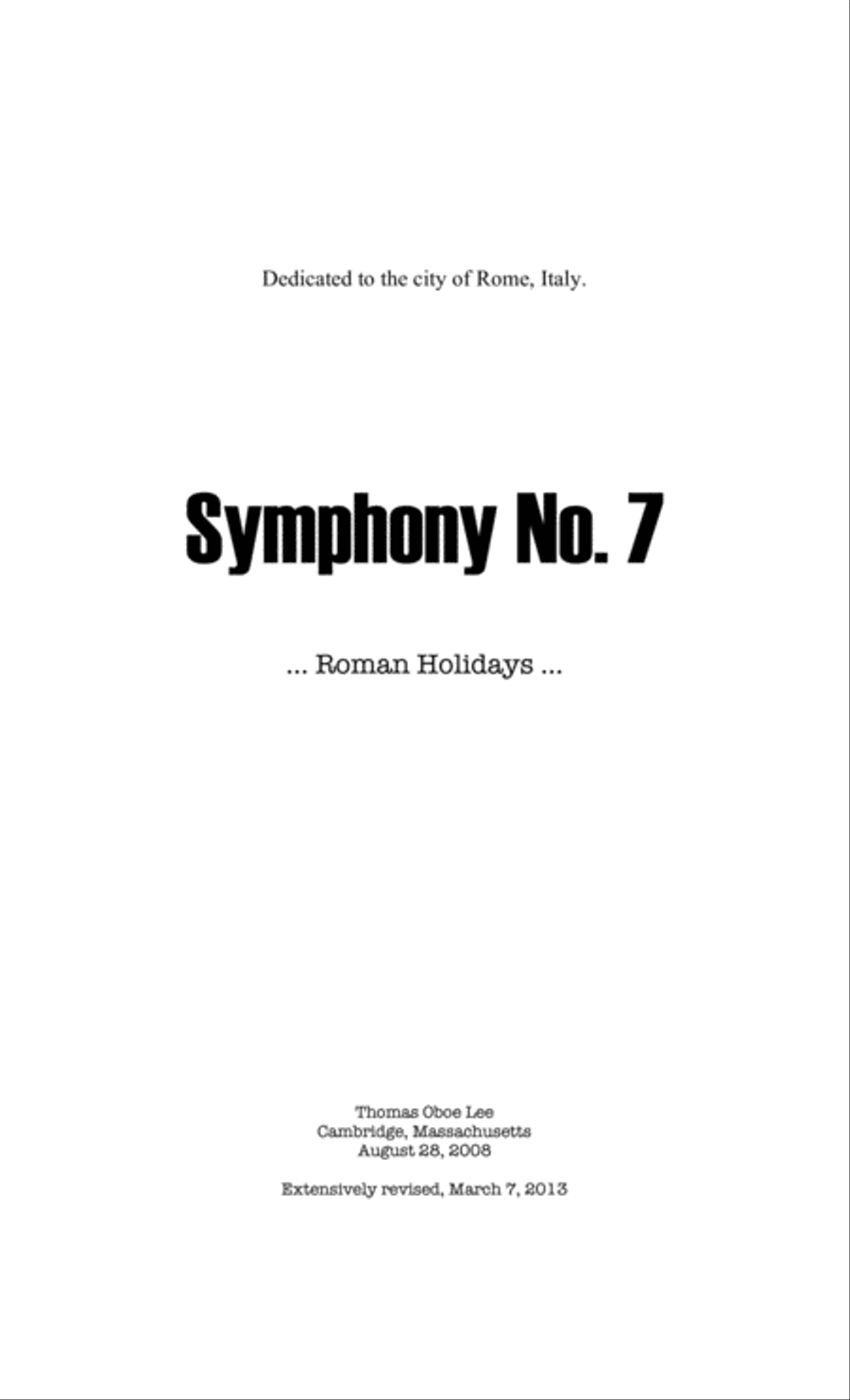Full Orchestra - Level 4 - Digital Download SKU: A0.869183 Composed by Thomas Oboe Lee. 20th Century,Baroque,Classical,Contemporary,Romantic Period. Score and parts. With 2 Flutes, piccolo 2 Oboes 2 Clarinets in Bb 2 Bassoons. 153 pages. Thomas Oboe Lee #3895. Published by Thomas Oboe Lee (A0.869183). Instrumentation: 2 Flutes, piccolo 2 Oboes 2 Clarinets in Bb 2 Bassoons 2 French Horns in F 2 Trumpets in Bb 3 Trombones Tuba TimpaniPercussion 1: triangle, claves, tom-toms, cow-bells Percussion 2: snare drum, bass drum 1st Violin 2nd Violin Viola Cello Double bass This is a transposed score. Program note: My love affair with the city of Rome dates back to the year 1986-87 when I spent just under eleven months at the American Academy in Rome on a Rome Prize Fellowship. During that Fellowship year I was very much inspired by the beauty and culture of the Eternal City, which resulted in a number of works that continue to resonate with me: Twenty-nine Fireflies Book II for solo piano; Concertino for trumpet, timpani and strings; Apples ⦠six dreams by Richard Kenney; String Quartet No 5 ⦠Four Birthdays; and Chôrinhos ⦠opus 38. Since 1997 my wife, Kristin Beckwith, and I have returned to the American Academy in Rome almost every year. I would compose in the morning and then my wife and I would go to our usual haunt at Bar G. for cappuccini and cornetti. And then weâd go to the local bakery and street markets and buy stuff for lunch. In the afternoon we would wander into the city to go shopping and sight-seeing. In the evenings we would dine at one of our favorite local trattorias. Life could not be better in Rome. Musically speaking, several important works in my portfolio had their beginnings during these sojourns at the Academy , among them Yo Picasso, Flauta Carioca, Mass for the Holy Year 2000, Symphony No. 5 ⦠Utopia Parkway, Twenty-nine Fireflies Books IV & V, and Piano Concerto ⦠Mozartiana. Just before the 2008 recession, clarinetist extraordinaire Jonathan Cohler asked me to write a symphony for the inaugural concert of a new orchestra he was planning to create. I came up with Symphony No. 7 ⦠Roman Holidays, my give back to the city of Rome â a compendium of favorite places that continue to live in my thoughts and musings. Although the work is heard in four movements, it is actually divided into seven sections, as in the seven hills of Rome. 1. Prelude: Fontana Paola and the panoramic view of the city of Rome from that vantage point. 2. First interlude: La Befana festivities at Piazza Navona. The Protestant Cemetery in Testaccio at night under a full moon. 3. Second interlude: Fontana delle Tartughe in the Jewish Ghetto. Berniniâs Apollo and Daphne at the Galleria Borghese. 4. Third interlude: Berniniâs Beata Ludovica Albertoni in Trastevere. The Spanish Steps and the view of Rome from the French Academy at Villa Medici. NB: Unfortunately, thanks to the recession, Roman Holidays never saw the light of day. This year (2013) I decided to revisit the work, which lay dormant for 5 five years, and saw that it could use a little tweaking. The new version is essentially the same, musically speaking. I reduced the orchestration a bit (two horns instead of four, and two trumpets instead of three) and added more heft to the lower brass. I completely rewrote the tune for the floating foreign ghosts at the Protestant Cemetery. I also shortened the work by about three minutes by cutting some repeats. Enjoy!!!Audio link: https://thomasoboelee.bandcamp.com/album/symphony-no-7-roman-holidays-2008-rev-2013Video link: https://youtu.be/1DlzEOUmH54
